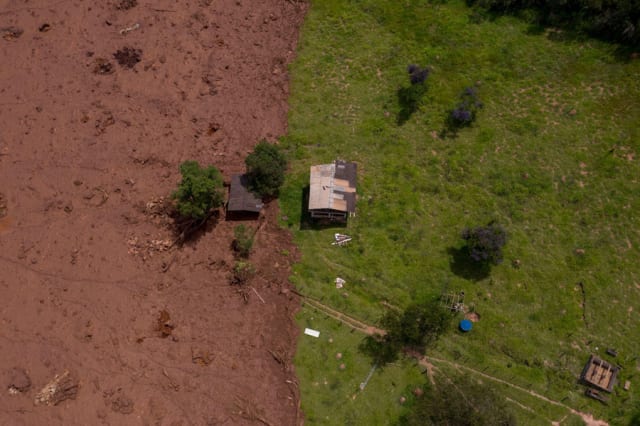
Aerial footage of destruction from the Brumadinho dam collapse, taken two days after the collapse occurred. When the mining dam broke, it sent a wave of toxic mud into the town underneath the mine, killing at least 160 people. Now, people are looking for answers. (Image courtesy of Mauro Pimentel/AFP.)
A mining dam collapse in Brazil that killed over 160 people has put the world’s largest producer of iron ore under the microscope for its safety practices.
On January 25, a tailing dam at the Córrego do Feijão ore mine collapsed, burying the mine’s administrative office and the nearby town of Brumadinho in toxic mud. Brazil-based multinational Vale insists that it monitored the dam carefully, and claims that there was no way of knowing it would collapse.
But critics of the company say that the tragedy was entirely preventable; Brumadinho Mayor Avimar Barcelos called the company “incompetent and reckless.” And an investigation into the collapse reveals a controversial dam design, substandard maintenance, and a disregard for repeated warnings.
Just after noon on January 25, Tailing Dam No.1 suffered a collapse. From videos of the collapse, it appears to have occurred almost spontaneously—a small failure that quickly became catastrophic. “It started as a pinpoint, and maybe in one second it looked like a whole patch down there,” William F. Marcuson III, former president of the American Society of Civil Engineers, told the New York Times. “The dam fails…

